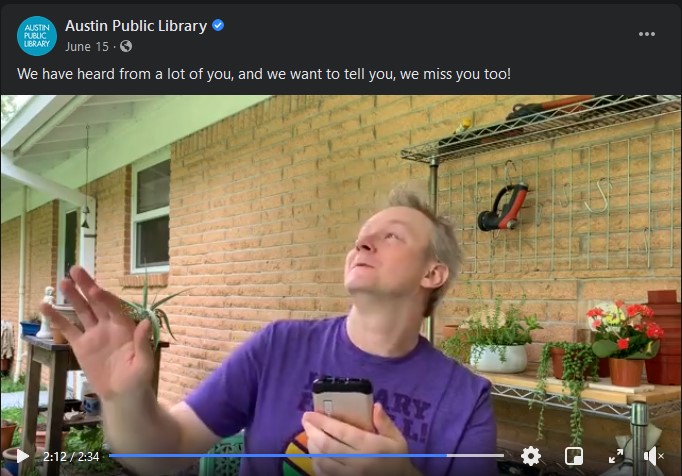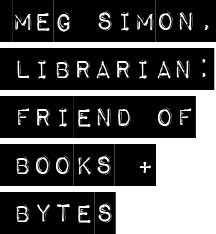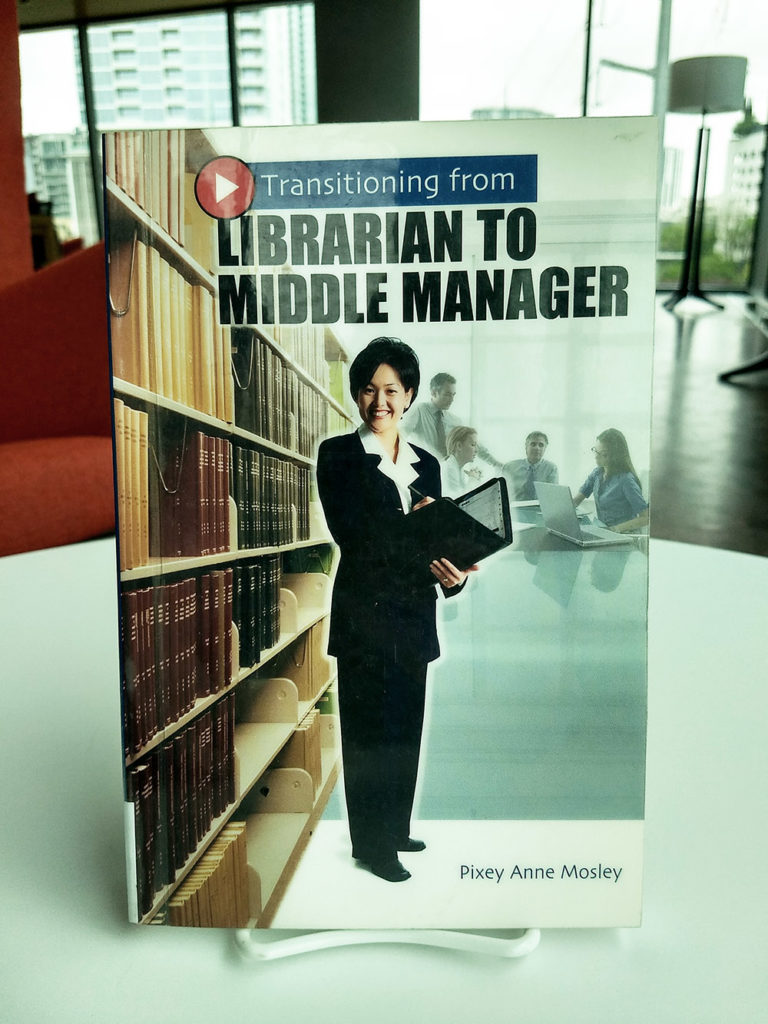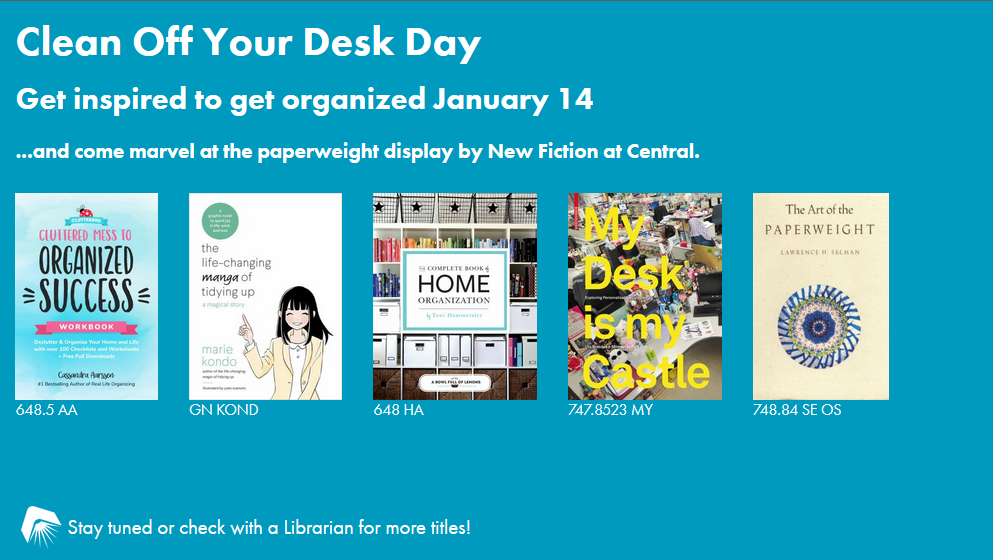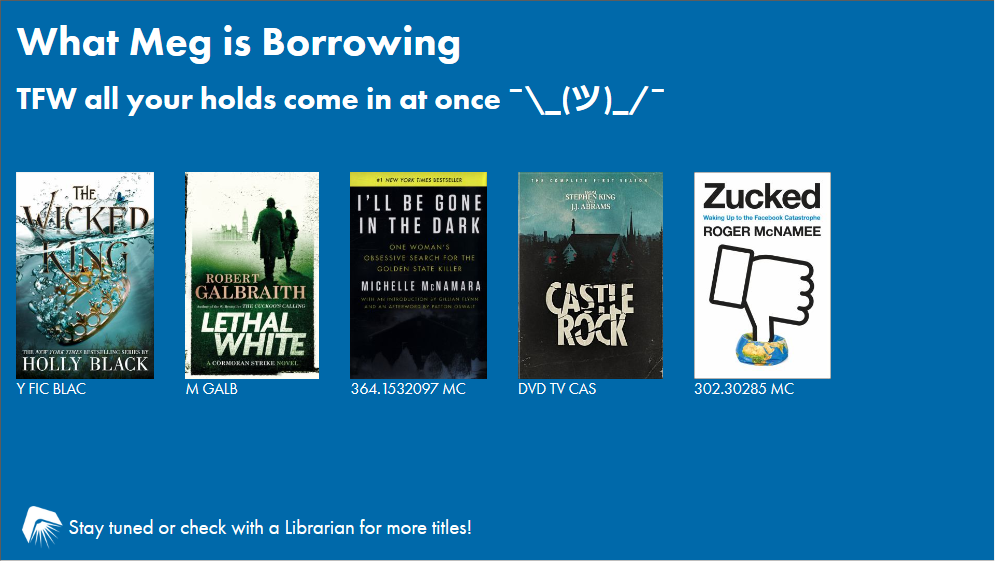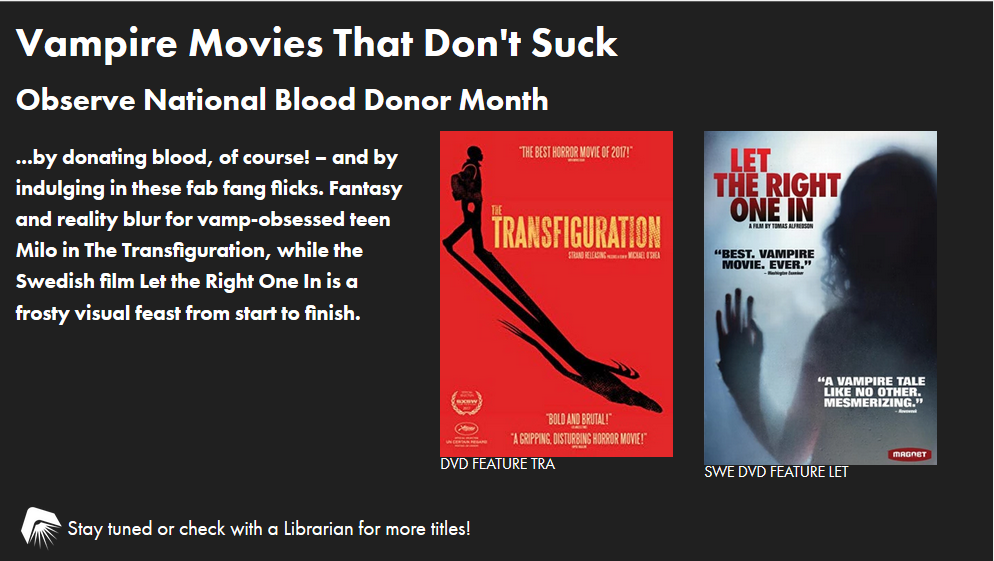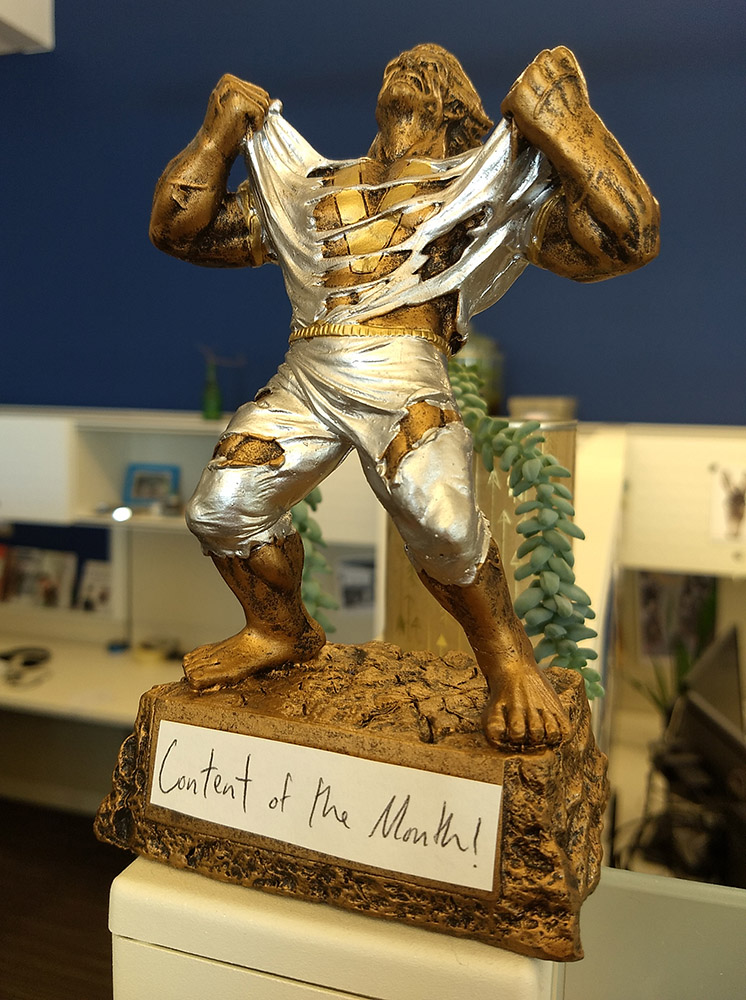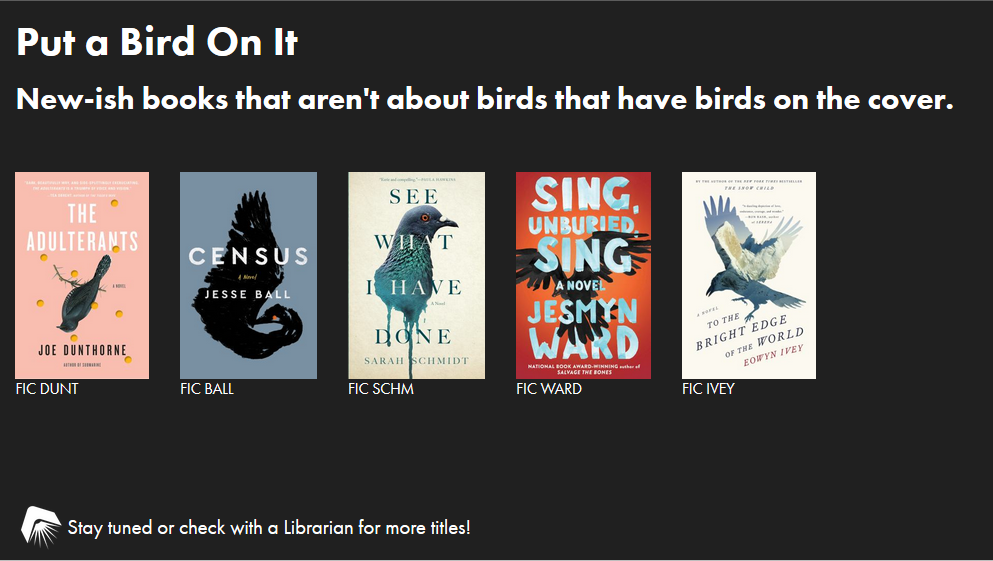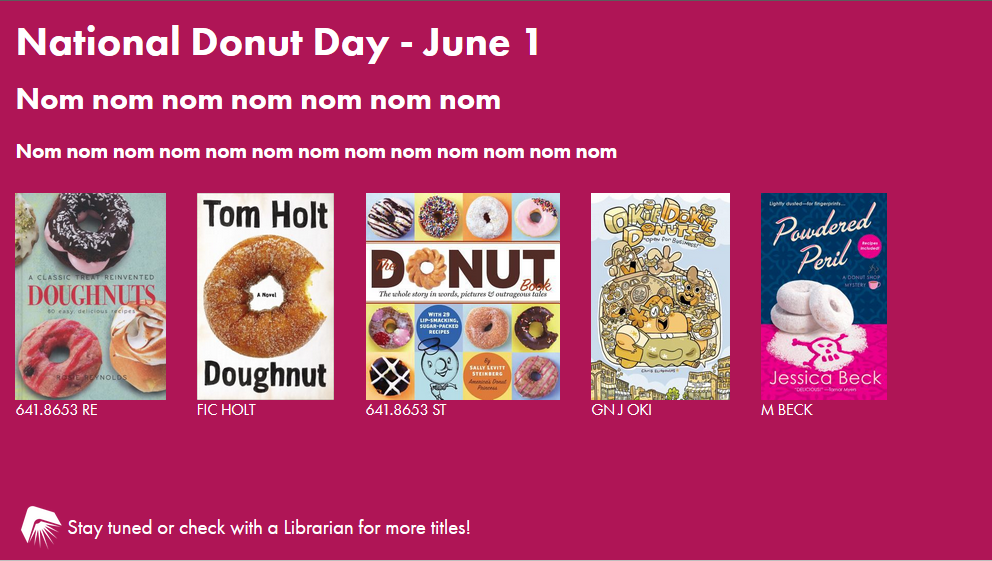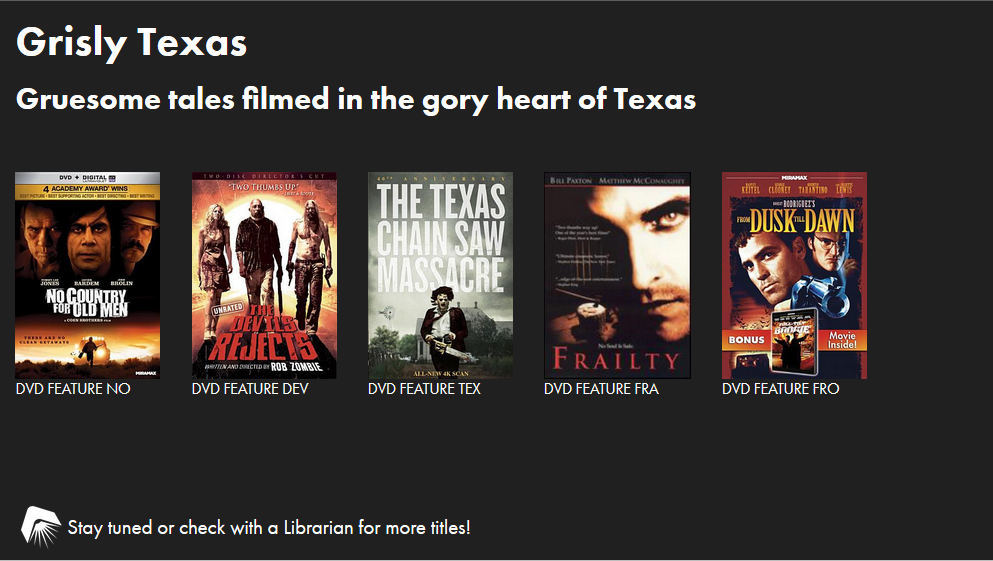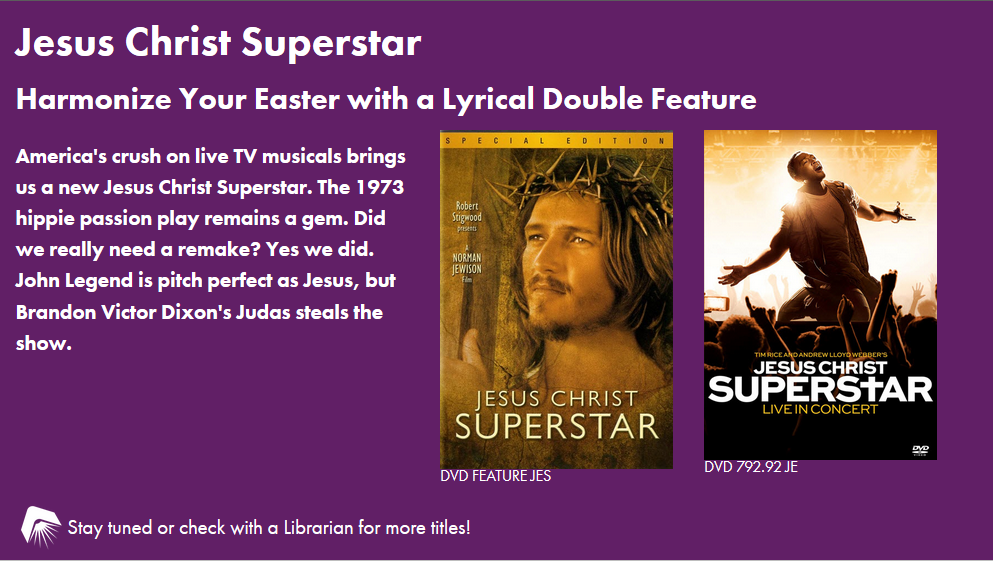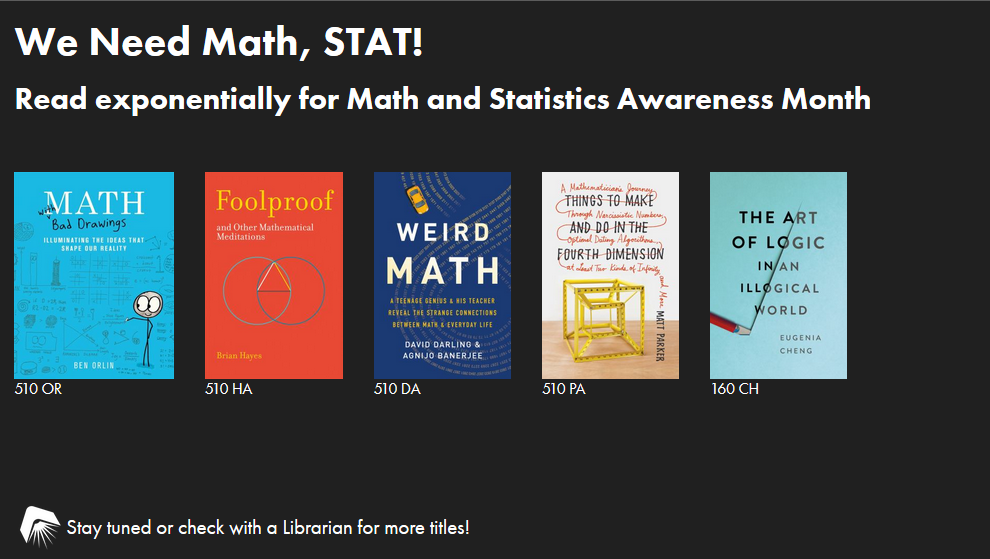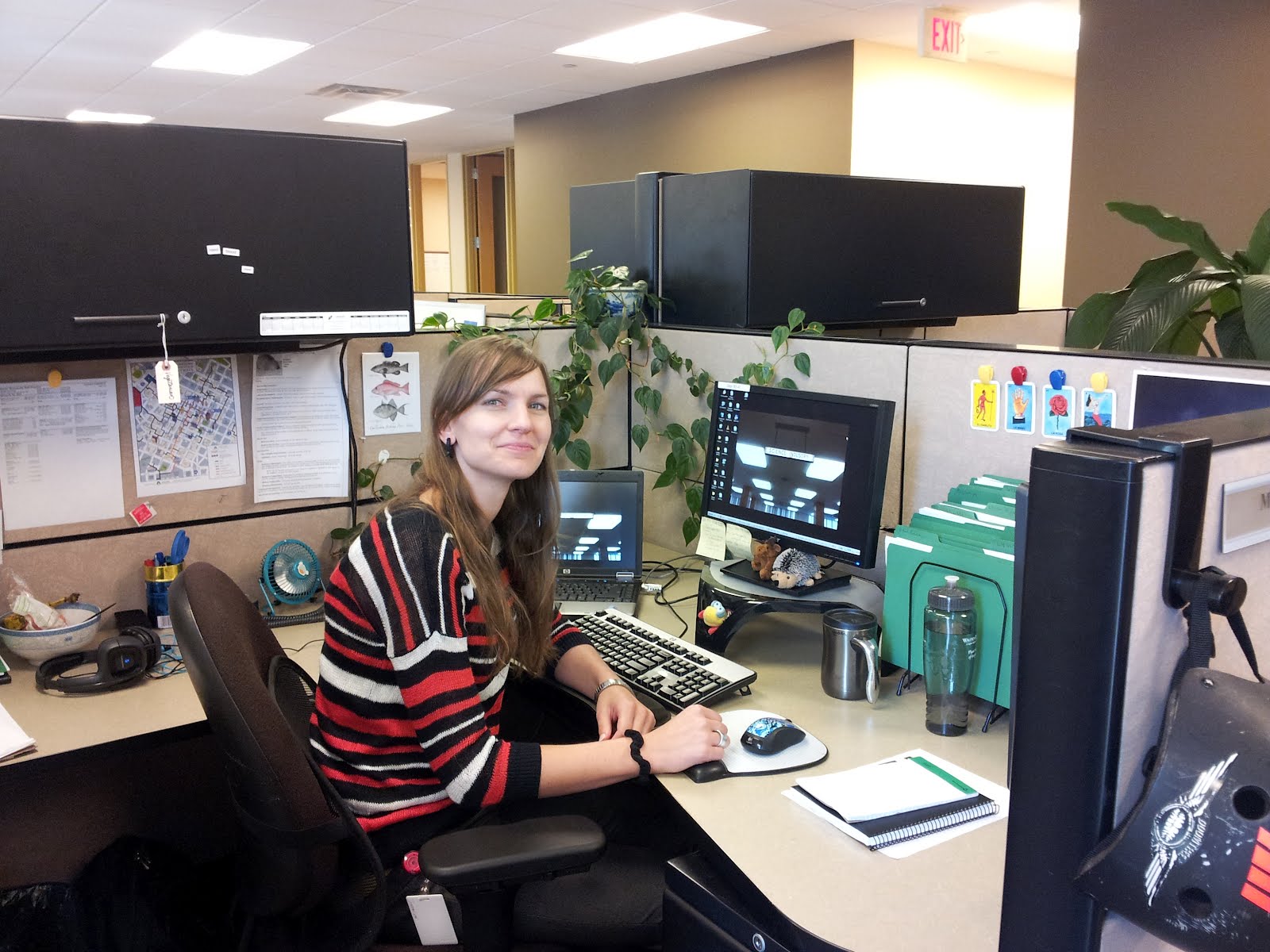At the start of the pandemic, Library Land was in a mad scramble to meet the moment with online content. Austin Public at first shied away from live virtual programming and especially anything that could be construed as an unauthorized use of an unauthorized platform (sorry, Zoom!). Early asynchronous video singalongs for kids on Facebook morphed into the push for video content across all audiences. APL+ was born — video book talks, crafts, cooking demos, Virtual Library promos, and more.
I’m not gonna lie. I was skeptical of this “multifaceted digital solution for creating and offering digital content for the public,” and I remain concerned about our efforts to ensure that these videos reach their intended audiences. But we’ve come a long way and I am proud of our accomplishments as a group and especially of my own achievements. I am a member of the Adult Content Team system-wide and the lead for coordinating videos within the Reference Team (our group has a 6 videos per month quota).
What exactly do I do? Pretty much everything:
- Produce content guidelines
- Brainstorm and develop ideas
- Define roles, processes, and expectations in extensive documentation
- Write and edit scripts
- Act on camera
- Film the dang things (we primarily film on our phones)
- Create voiceover
- Make screencapture videos for database and app demos
- Source image assets
- Create rough cut edits, which entailed learning:
- Basic audio cleanup with VLC and Audacity
- Shotcut video editor
Basically, I do everything up until post-production, for which we have a wizard. Regarding the above, I also help staff contributors do all of these things, reviewing scripts and footage, and providing feedback for improved clarity, continuity, and quality. This aspect has been unexpectedly taxing, akin to emotional labor, providing compassionate constructive criticism and coaching to get the results we want while keeping staff creators encouraged — folks who might not be writers, who are definitely not actors, and who might not be particularly technically savvy — all while everyone is working from home.
With my role as Reference video coordinator, I now spend most of my time helping other people create videos rather than making my own. But here are a couple examples of my work, start to almost finish (our post-prod guru does the fancy animations, image overlays, etc.). Click through to watch them on Vimeo:


One of my largest undertakings was the We Miss You video. Though not technically under the APL+ banner, the workflow was much the same. It was shared on social media in June, shortly before we launched our curbside service. For this project, I:
- Wrote and pitched the script to the Communications Manager and Assistant Director. They loved it.
- Wrote instructions for filming and provided a sample video clip of what I was looking for. Most of the video was scripted with sections for participants to improvise and share personal tidbits.
- Recruited 17 staff participants across divisions.
- Created the video, selecting the best takes from each submission and cutting it together. There were ~75 total clips for a video of about 2.5 minutes. The editing process took about 16 hours.
On Instagram, over the course of one weekend, the video received over 3400 views, over 400 likes and 40 customer comments, including:
Thank you all! We miss our libraries, but it was so nice to see some familiar faces! ❤️
Our family misses the library! Thank you for the ❤️❤️❤️
This made my day!! Can’t wait to see Martha and the other Howson Library branch librarians as soon as it is safe to!!! So much love for APL!!
We miss you too! Thanks for this!💙📚
Miss y’all too 💖 Thanks for everything you do.
That got me teared up! My family misses our librarians and we appreciate all your doing to keep us reading!
Beautiful, thank you Austin Public Library!
You guys… my heart is exploding. Thank you so much for all you do #ImNotCryingYoureCrying
We love you and miss you but we want you to be safe!
We miss the library and our librarians so much! Thank you for reopening the book drops and making curbside pickups possible. We are so grateful to the Austin Library!
While the community goodwill felt great, I didn’t anticipate the equal outpouring from staff who were thrilled to participate and heartened by the effort. Logistically it was challenging. Thematically it was complicated, and it still is. But I’m proud to have captured the pandemic zeitgeist and give my colleagues a voice. Check it out on Facebook!
